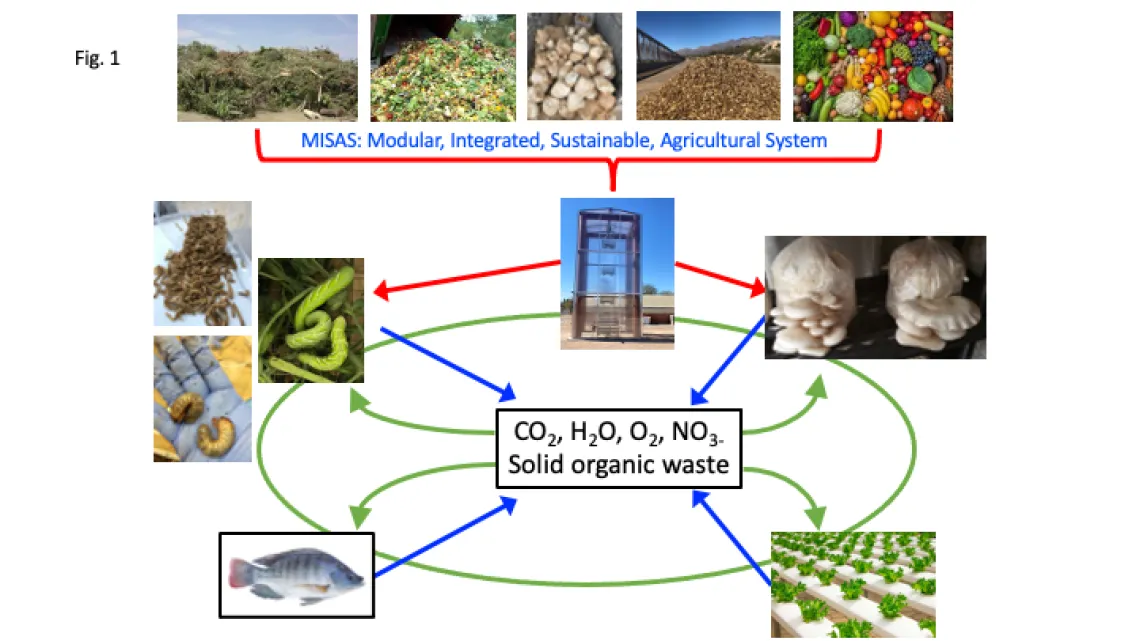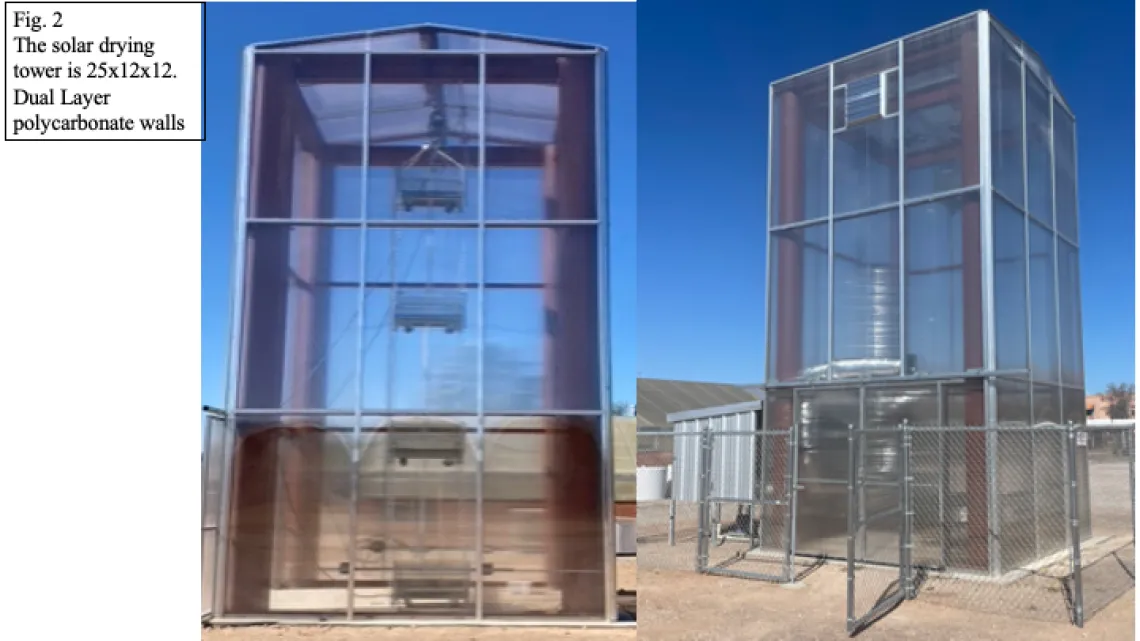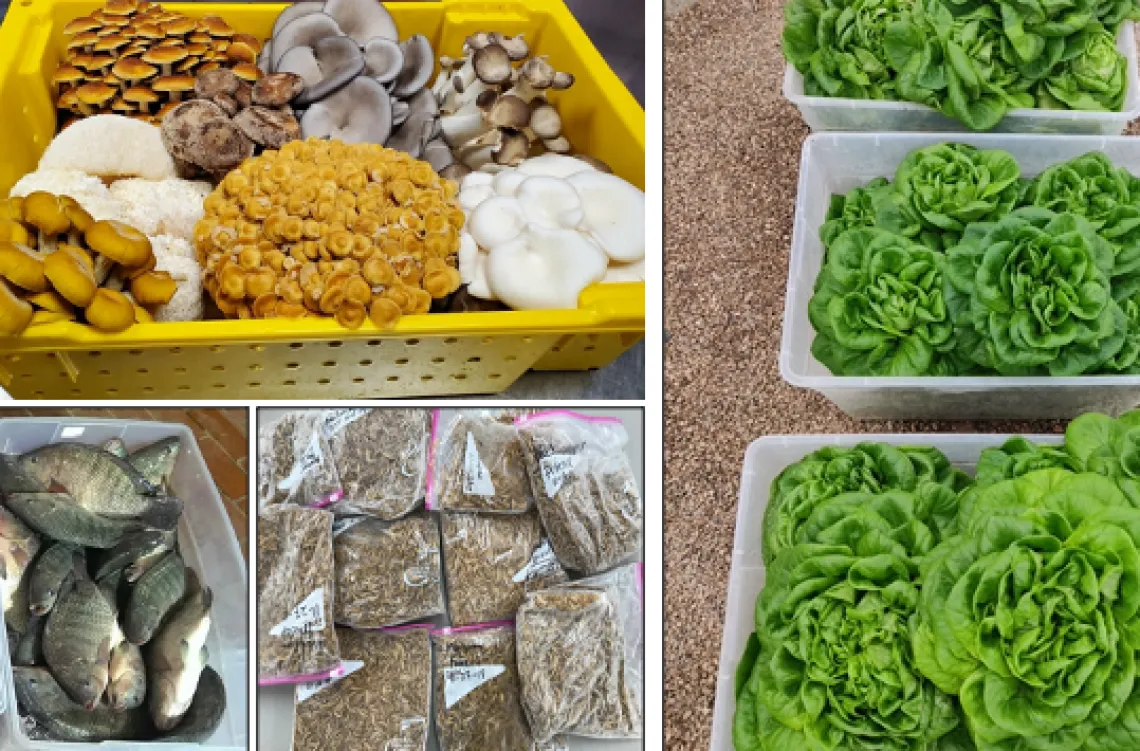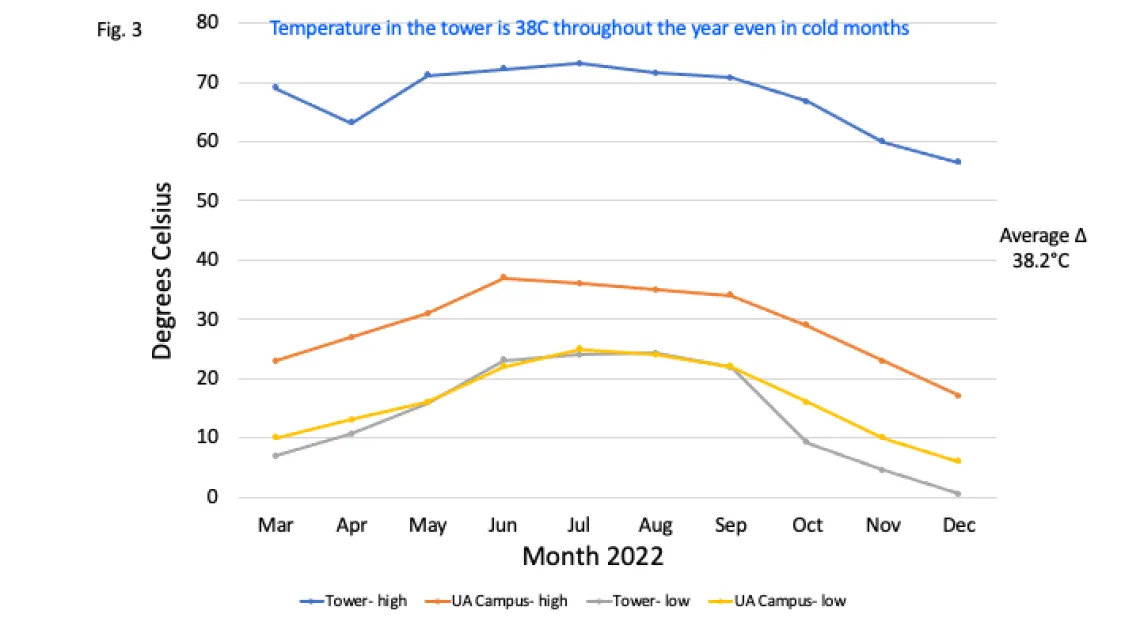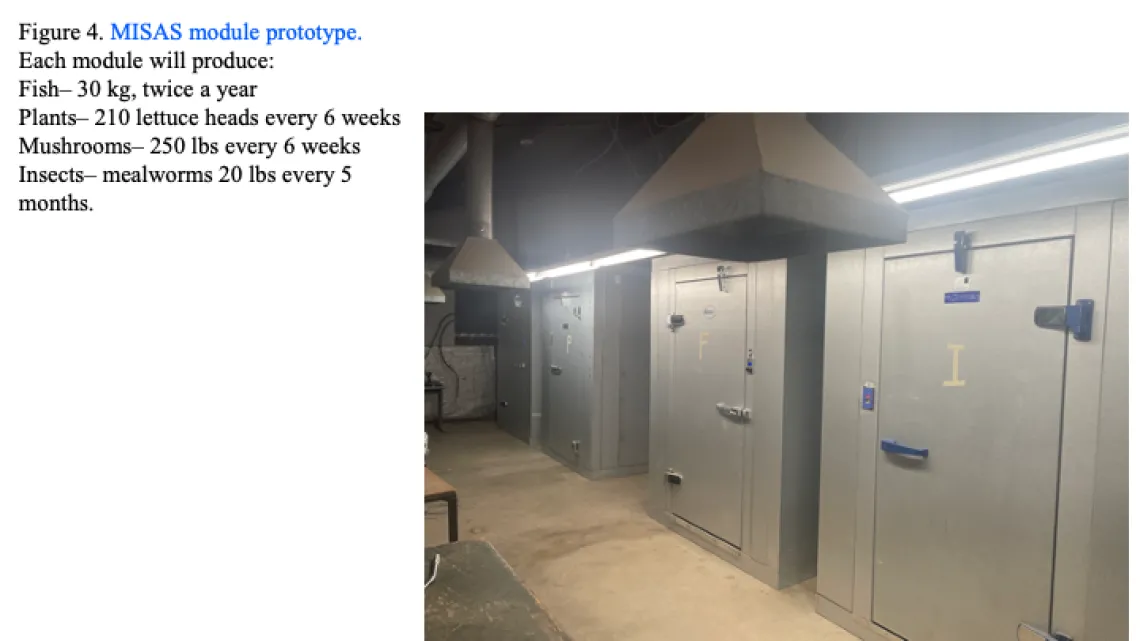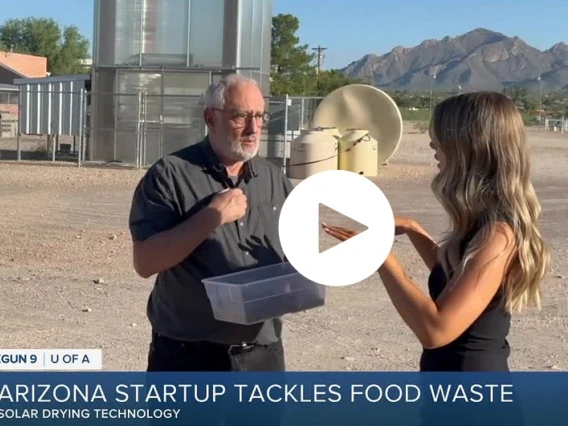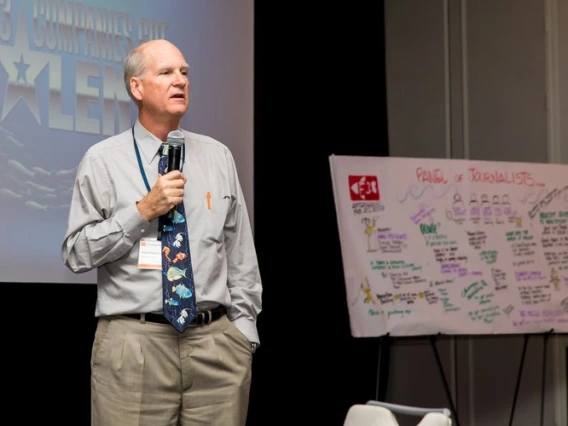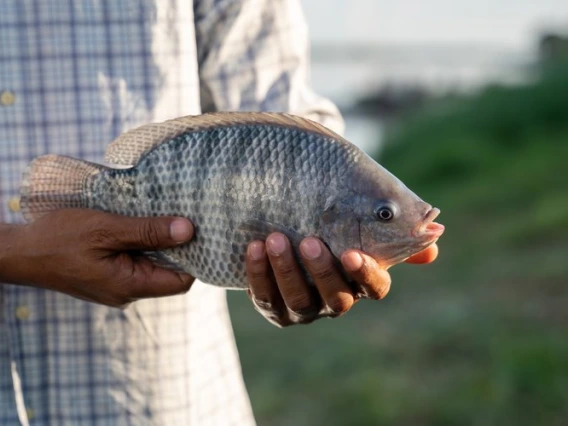MISAS: Modular Integrated Sustainable Agricultural Systems
Goals
Driving challenge behind the project
Four co-occurring trends related to environmental resilience have motivated the development of Modular Integrated Sustainable Agricultural Systems (MISAS) at UA.
- The world is expected to reach nine billion people by 2050. The UN estimates it will require a 70% increase of current food-production practices to feed this many people. Such an increase is not feasible with current practices and alternative foods and highly efficient production systems are being sought.
- Worldwide, over 30% of all food produced ends up in the landfill. In the United States, that figure is higher at 40%, a staggering 132.7 billion pounds. Of this, 62.1 billion pounds, 46.8%, are fruits, vegetables and grains, Solutions to mitigate food loss are needed.
- Fresh drinkable water is increasingly difficult to come by and will be exacerbated by climate change going forward.
- The world population is moving more to urban environments. Today, 49% of the world population lives in cities and this is expected to increase to 70% by 2050. Thus, integrated controlled environment production systems that can be developed close to these urban centers are desired.
How we address these challenges
A modular, integrated, sustainable, agricultural system addresses all four of these issues. Four food systems (fish, mushrooms, insects, plants) will be utilized and integrated into a highly efficient, controlled circular economy system (see Figure 1 below).
Excess, fresh, human-grade fruits and vegetables as well as food and agricultural waste (top of Figure 1) are first dried in our solar drying tower (center of Figure 1 and Figure 2) located at Campus Agricultural Center (CAC). Water captured from this drying will be incorporated into the MISAS system. Fruits and vegetables contain >90% water: for every ton of food dried, we reclaim about 0.9m3 of fresh water.
This dried organic material is then digested by insects and oyster mushrooms, which are among the most efficient biological systems for converting organic material into food. The oyster mushrooms are harvested for human consumption.
The insects are fed to the tilapia fish and the fish excreta are fertilizer for hydroponically grown vegetables such as lettuce and kale in an aquaponic system. The aquaculture industry is moving heavily towards replacing fishmeal with insects. We have already shown that the fish and plants do as well as, or better, when the fish are fed insects.
MISAS is designed such that the waste/by-products (carbon dioxide (CO2), oxygen (O2), relative humidity (RH), nitrogen (NO3-), water (H2O), and organic solids) of any one food type (blue arrows in Fig. 1) can be repurposed as a resource for another food type in a nearly closed circular economy (green arrows and green circle in Fig. 1).
Last, MISAS is controlled environment agriculture (CEA). As such, it is particularly suitable to urban and peri-urban environments. As the population of cities grows, MISAS can provide food near the consumer, greatly reducing transportation costs and carbon footprint.
What we will do through VIP
With VIP we will:
- Measure all the inputs (CO2, O2, H2O, RH, feed, electricity, nutrients) and outputs of each system (Figure 4) at 25%, 50%, 75%, and 100% capacity. The outputs to be quantified are the same as the inputs plus the expected harvest as shown in Figure 5, below. This data will provide the baseline data needed to apply for federally funded grants to integrate the modules into a circular economy system (Fig. 1).
- Learn more about the solar drying tower. The prototype solar drying tower (Fig. 2) is operational and already collecting data. Fig. 3 shows that the internal solar tower temperature is about 38ºC higher than the ambient year-round temperature. With VIP we will determine how drying times change across seasons as cloud cover, temperature, and humidity changes.
We have an ongoing working agreement with the Student Union kitchen for 8,800 lbs of fruit and vegetable waste, per week, throughout the school year. We are also in discussions with Borderlands Produce Rescue to supply fresh produce as needed.
Issues Involved or Addressed
- Aquaculture
- Biosystem engineering
- Circular economy
- Entomology
- Food waste
- Hydroponics
- Mycology
- Sustainability
Methods and Tech
Fish, insects, mushrooms, and plants will be grown at different levels in their own modules.
All inputs and all outputs will be recorded either by sensors or by hand. Harvest yields will also be recorded.
Academic Majors of Interest
- Aquaculture
- Biosystems Engineering
- Circular Economies
- Controlled Environment Agriculture
- Entomology
- Hydroponics
- Plant Sciences
- Nutritional Sciences
- Sustainability
Preferred Interests and Preparation
Attributes
- Able to work independently once trained
- Attention to detail
- Data collection and verification experience
- Self-motivated
- Work well in a team
Application Process
Prospective VIP students should email the appropriate faculty member based on their area of interest:
INSECTS- Professor Goggy Davidowitz goggy@arizona.edu(link sends e-mail)
FISH- Professor Kevin Fitzsimmons kevfitz@ag.arizona.edu(link sends e-mail)
MUSHROOMS- Professor Barry Pryor bmpryor@arizona.edu(link sends e-mail)
PLANTS- Professor Murat Kacira mkacira@arizona.edu(link sends e-mail)


